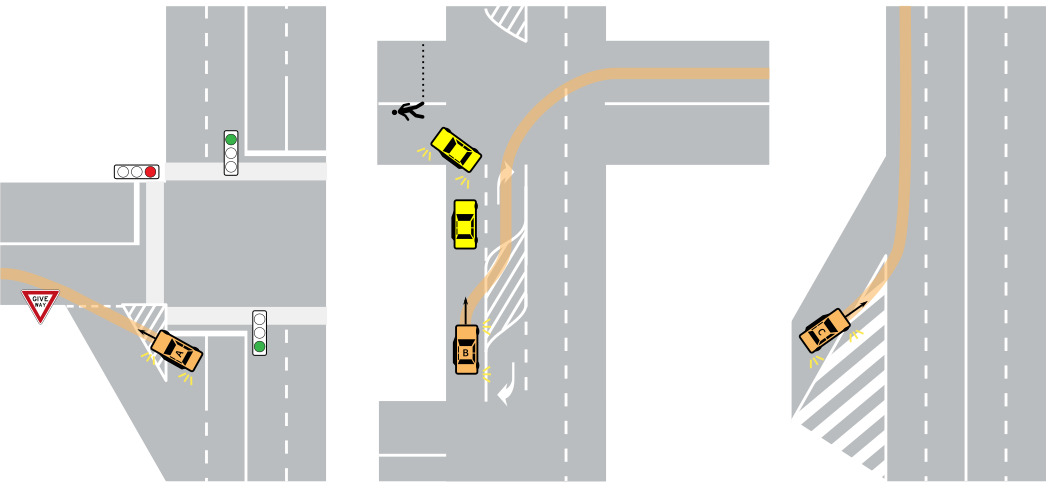Australian Road Rules: Crossing a painted traffic island
Consider the situations in the following diagram:

Car A is attempting to turn left at an intersection with a slip lane, and drives over a painted traffic island to reach the slip lane.
Car B is attempting to turn right at an intersection, and impatiently drives over a painted traffic island to reach the turning lane.
Car C is attempting to merge onto a road from an on-ramp, and drives over a painted traffic island separating the two roads.
Question. In which situation(s), if any, is this legal?
Answer. This is legal in situation B only.
Australian Road Rule 138 (‘Keeping off a painted island’) says:
(1) A driver must not drive on or over a single continuous line, or 2 parallel continuous lines, along a side of or surrounding a painted island, except as permitted under this rule or rule 139(4).
However, exceptions exist for some situations covered in this example:
(2) A driver may drive on or over a single continuous line along the side of or surrounding a painted island for up to 50 metres:
(a) to enter or leave the road; or
(b) to enter a turning lane that begins immediately after the painted island; or
(c) to enter a part of the road of one kind from a part of the road of another kind (for example, moving to or from a service road or emergency stopping lane); or
(d) to park in angle parking on the opposite side of the road provided that the driver does not need to perform a U-turn to reach the parking area.
This means that crossing the painted island is legal in situation B (subrule (b)). However:
(3) Subrule (2)(a) does not apply in the case of a painted island:
(a) that separates a road that takes vehicles in one direction from another road that takes vehicles in the same direction at a place where the roads merge; or
(b) that separates one part of a road from other parts of the road to create a slip lane.
Therefore, crossing the painted island is not legal in situation A (subrule (b)) or situation C (subrule (a)).